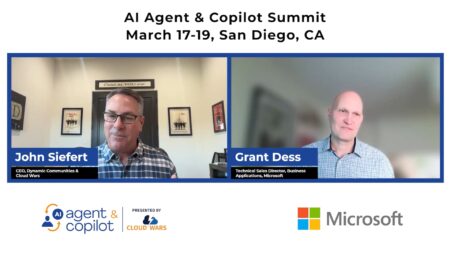CFOs looking to accelerate productivity and build novel solutions need to learn about the possibilities offered by low-code and no-code tools. As the name implies, low-code/no-code tools are a fast way to build custom applications, without the need to become an expert at coding. For those willing to take a dive into creating custom applications, LC/NC tools prove to be one of the fastest ways to garner success, leading to a new staff moniker of “citizen developer.”
However, no one should embrace the promises of LC/NC tools without performing a little due diligence. The numerous vendors that offer LC/NC tools and development environments would have potential customers believe that those solutions could potentially transform any staffer into an application-building genius. For those in the C suite, marketing promises are not a replacement for due diligence and even common sense. In other words, CFOs especially need to pay attention.
CFO’s Role in Vetting Products
Today’s CFOs are finding that being responsible for the financial well-being of the entire organization now involves scrutinizing the value of IT, and the services IT offers to the organization. With many organizations are going through the throes of digital projects, the modern CFOs role has also transformed, meaning that CFO’s must scrutinize the value of these digital initiatives against the cost of implementation.
CFOs will have to make choices and even drive the decision on digital investments or, alternatively, put the process on the back burner. Simply put, those choices have financial implications, which are central to the role of CFOs. Some of those financial calculations (or liabilities) may include:
- The cost to manage years, or even decades, of legacy code
- The cost of scaling compliance and cyberops in the cloud
- The cost of innovation, especially as development costs increase
It is those elements, and many others, that can drive costs higher than anticipated if certain considerations are not taken into account. However, replacing outmoded processes and systems with modern solutions allows organizations to reduce costs, potentially increase revenue, and improve operational efficiencies.
Yet, building and maintaining high-quality enterprise software is complex and expensive, especially when using traditional code-based approaches. That is where a NC/LC development platform can be a game changer.
Emergence of Low-Code/No-Code Tools
Ersatz LC/NC tools arrived on the scene years ago as 4th Generation Languages, or 4GLs, with embedded databases, and were often referred to as Rapid Application Development (RAD) tools and used to develop desktop apps. Those tools were often the sweethearts of so-called power users, as well as those who developed commercial software applications. Popular RAD products in the 1990s included Microsoft Access, FoxPro, and Clarion.
However, early RAD tools were ill-suited for the age of web applications. What’s more, many of the applications that were built could only use traditional proprietary databases, and others were used to create DOS-based applications, not Windows or other GUI-based operating systems.
In 2016, the terminology changed, when the term “low-code development” was coined by a market research institute as a generic term for a growing number of providers that offered a visual programming approach that eschewed the need to write complex code. Today, there are dozens, if not hundreds, of vendors offering some type of low-code/no-code development platforms, making it rather complex to choose what works best for a given requirement
Initial Use Cases
Typically, application development rests with IT and associated development teams. However, LC/NC tools introduce the concept of the citizen developer, someone who needs to build a simple application to form a task. In the past, those users would typically create spreadsheets to parse data and build charts and tables—an often tedious and manual process which meant selecting and importing data and then creating formulas to make calculations on the data.
LC/NC solutions changed that dynamic, allowing those builders of spreadsheets to create queries into corporate databases and display or change data in numerous ways. The process was one of designing a screen or dashboard, then populating that visual element with data selected from a database, and creating calculations or operations using simple-to-choose snippets of code. The end result was a simple application that served a particular need.
For CFOs looking to empower their staff with data analytics capabilities, LC/NC may be the quickest path forward. The tools available today offer a plethora of options, integrate with numerous data stores, and deliver digestible information in an easy-to-understand format.
The power of the tools today can allow departments, such as accounting and HR, to build simple applications that eliminate certain manual processes, all without having to deal with IT and internal developers. That is where the initial value comes from. However, CFOs should not expect those hand-crafted applications to replace commercial products or eliminate the need for spreadsheets and calculators.
What’s more, most of the LC/NC platforms come initially as software as a service. That means a user may need little more than a web browser to start building web applications. What’s more, most of the tools available can support multiple users, allow collaboration on building apps, and integrate security. Many also include predefined applications that are easy to modify for a specific circumstance.
Beyond Citizen Developers
As LC/NC tools grow in power, they are becoming more attractive to professional developers, especially those charged with transforming legacy applications into web applications. What’s more, LC/NC tools can plug into development frameworks, such as DevOps, and truly offer a collaborative experience that allows multiple developers to work together to build applications. Furthermore, LC/NC tools are self-documenting for the most part, allowing new developers to better understand changes that were made in the past.
CFOs will need to discover the challenges facing development teams and see if LC/NC platforms can help those teams accelerate applications development and in turn become more productive while eliminating errors caused by sloppy code. The future looks promising for LC/NC and may prove to be the best way to drive digital modernization, while also enabling non-programmers to lessen the burden on development and build their own ad-hoc solutions on the fly.







